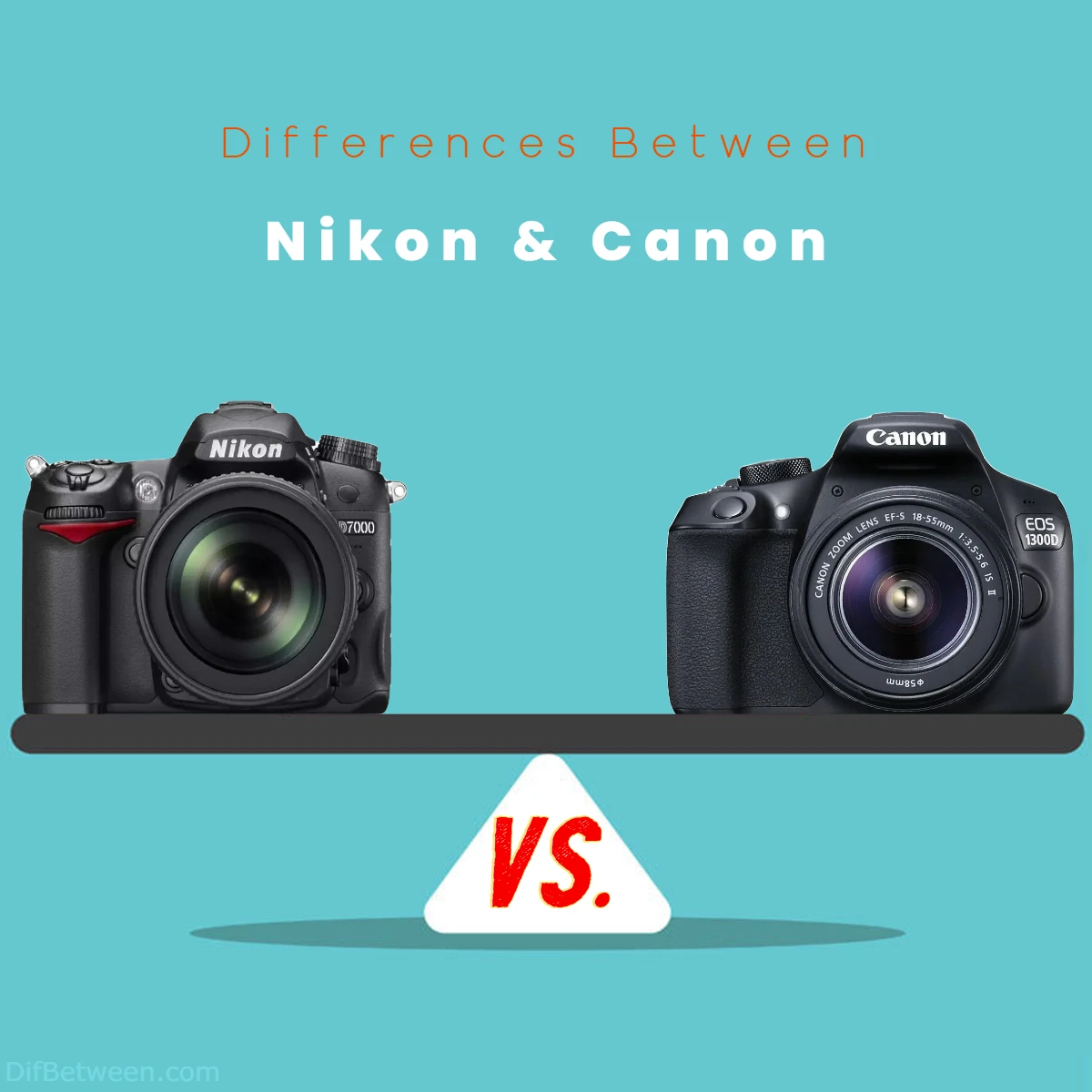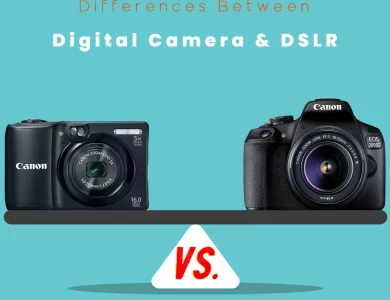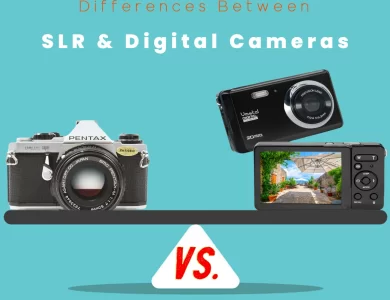
| Aspect | Nikon | Canon |
|---|---|---|
| Sensor Technology | Focus on dynamic range and low-light performance | Emphasis on color accuracy and noise reduction |
| Lens Ecosystem | NIKKOR lenses, F-mount and Z-mount options | EF lenses for DSLRs, RF lenses for mirrorless |
| Autofocus and Speed | Multi-CAM AF for precision, favored in wildlife/sports | Dual Pixel CMOS AF for swift and smooth focusing |
| Ergonomics | Comfortable grip, intuitive controls | User-friendly layout, logical menu structure |
| Video Performance | 4K recording, dynamic range focus | Canon Log, Dual Pixel AF for cinematic storytelling |
| Brand Legacy | Rich history, nostalgic appeal | Innovative legacy, active and diverse community |
| Price Range | Wide range of options across budgets | Diverse lineup catering to various price points |
| Software & Connectivity | SnapBridge for wireless communication | Canon Connect app, Wi-Fi, NFC for seamless connectivity |
| Build Quality | Sturdy construction, weather-sealing | Reliable build quality, suitable for most scenarios |
| Innovations | Z-mount system driving mirrorless innovation | RF-mount system and advancements in mirrorless tech |
If you’ve ever delved into the world of photography, you know these two brands stand tall, each with its fervent supporters and unique offerings. But what sets them apart? Let’s embark on a journey through the key differences between Nikon and Canon cameras, helping you make an informed decision for your next photography venture.
Differences Between Nikon and Canon Cameras
The key differences between Nikon and Canon cameras revolve around their distinct approaches to image quality, autofocus, lens ecosystems, and more. Nikon cameras excel in dynamic range and low-light performance, making them ideal for vivid landscapes and portraits. In contrast, Canon emphasizes color accuracy and noise reduction, ensuring faithful and vibrant imagery. Both brands offer diverse lens options – Nikon’s NIKKOR lenses and Canon’s EF and RF lenses cater to various focal lengths, enhancing creative potential. Autofocus-wise, Nikon’s Multi-CAM AF and Canon’s Dual Pixel CMOS AF provide precision and swift focusing, catering to different photographic scenarios. Ultimately, the choice hinges on your artistic vision and preferences, guided by these nuances.
1. Sensor Technology and Image Quality
Nikon: A Sensational Sensor Saga
Nikon cameras are renowned for their cutting-edge sensor technology. The brand’s EXPEED image processors coupled with a wide dynamic range provide stunning clarity and lifelike colors in your shots. Nikon’s dedication to sensor innovation results in impressive low-light performance, ensuring your images remain vibrant even in challenging lighting conditions.
Canon: The Captivating Image Craftsman
Canon, on the other hand, employs its DIGIC image processors, which are equally noteworthy. Canon cameras have a knack for producing natural-looking, vivid images with accurate colors. They also excel at handling noise in high-ISO settings, giving you the confidence to shoot in dimly lit environments without compromising on quality.
In summary, while both brands deliver exceptional image quality, Nikon focuses on dynamic range, making it a top choice for landscape and portrait photographers. Canon, meanwhile, leans towards accurate color reproduction and noise reduction, making it a go-to for those who often shoot in low-light scenarios.
2. Lens Ecosystem: Expanding Your Horizons
Nikon: Navigating the NIKKOR Universe
Nikon’s NIKKOR lenses are revered for their exceptional optical quality and versatility. With a wide array of lenses, from macro to telephoto, photographers have ample creative freedom. The brand’s F-mount lenses have been a staple for decades, but Nikon has also ventured into the Z-mount system, introducing a more compact design with improved autofocus capabilities.
Canon: The Charisma of EF and RF Lenses
Canon’s lens ecosystem boasts the iconic EF lenses and the newer RF lenses designed for mirrorless cameras. These lenses offer impressive sharpness and a variety of focal lengths. The EF lenses, having been around since the late 80s, provide compatibility with Canon’s DSLRs, while the RF lenses embody the brand’s commitment to innovation in the mirrorless realm.
Whether you choose Nikon’s NIKKOR lenses or Canon’s EF and RF lenses depends on your preferences and existing gear. Both brands offer a plethora of options to cater to your photographic needs.
3. Autofocus and Speed: Seizing the Moment
Nikon: Nailing Focus with Precision
Nikon’s autofocus (AF) systems are revered for their accuracy and reliability. The brand’s Multi-CAM AF technology employs a multitude of focus points to ensure sharpness, even when tracking moving subjects. Nikon’s continuous focus performance is particularly valued by wildlife and sports photographers who need to capture action-packed moments.
Canon: Focusing on Swift Success
Canon’s Dual Pixel CMOS AF technology has taken the industry by storm, especially in the realm of video recording. This innovative approach to autofocus utilizes phase-detection pixels on the camera’s sensor, allowing for smooth and rapid focusing during video capture. For photographers, Canon’s AF systems provide quick and accurate results, catering to a variety of shooting scenarios.
To decide between Nikon and Canon in terms of autofocus and speed, consider the type of photography you’re passionate about. Both brands offer remarkable AF capabilities, but the nuances might tip the scale for your specific needs.
4. Ergonomics and User Interface: The Intuitive Experience
Nikon: Ergonomic Excellence
Nikon cameras are often lauded for their comfortable grip and user-friendly layout. The brand places a premium on intuitive controls, ensuring that photographers can adjust settings swiftly without taking their eyes off the viewfinder. This ergonomic approach can enhance your shooting experience, especially during long sessions.
Canon: Interface Intuitiveness
Canon cameras, too, offer a user-centric design philosophy. The buttons and dials are strategically placed for easy access, promoting a seamless shooting experience. Canon’s user interface, with its logical menu structure, simplifies the learning curve for newcomers, enabling them to grasp the intricacies of photography faster.
When choosing between Nikon and Canon based on ergonomics and user interface, it’s worth considering how each brand’s design philosophy aligns with your shooting style and preferences.
5. Video Performance: A Cinematic Journey
Nikon: The Art of Filmmaking
Nikon cameras are no slouch when it comes to video performance. With features like 4K recording, flat picture profiles, and external microphone inputs, Nikon caters to videographers seeking high-quality cinematic output. Nikon’s emphasis on dynamic range also ensures your videos retain details in both highlights and shadows.
Canon: The Visual Storyteller
Canon’s legacy in the video realm is well-established, thanks to its widespread use in the filmmaking industry. Canon cameras offer superb video autofocus, allowing you to effortlessly track subjects while recording. The availability of features like Canon Log and Dual Pixel AF enhances your ability to craft visually captivating narratives.
If your creative journey encompasses videography, your decision between Nikon and Canon should be influenced by the specific video features that align with your vision.
6. Brand Legacy and Community
Nikon: A Rich Heritage
Nikon boasts a storied history in the world of photography, with a legacy spanning decades. This heritage fosters a dedicated community of photographers who share their passion for capturing moments through Nikon lenses. The brand’s cameras often carry a sense of nostalgia, appealing to those who appreciate the evolution of photographic technology.
Canon: A Visionary Trailblazer
Canon’s impact on the photography landscape is equally profound. Its cameras have been at the forefront of innovation, shaping the way photographers approach their craft. The Canon community is vibrant and diverse, offering a platform for enthusiasts to exchange knowledge and experiences, contributing to the brand’s ongoing legacy.
7. Price Range and Accessibility
Nikon: A Spectrum of Options
Nikon cameras come in a wide range of price points, catering to both beginners and professionals. From entry-level DSLRs to high-end mirrorless models, Nikon ensures that photographers at every level can find a camera that suits their budget and needs. This affordability coupled with Nikon’s reputation for quality makes it an attractive option for those looking to enter the world of photography without breaking the bank.
Canon: Affordable Diversity
Canon follows a similar strategy by offering a diverse lineup of cameras spanning various price brackets. This accessibility has contributed to Canon’s widespread popularity, particularly among photography enthusiasts who want a reliable and affordable camera. Whether you’re a hobbyist or a seasoned pro, Canon’s pricing strategy allows you to find a camera that aligns with your financial considerations.
When it comes to price and accessibility, both Nikon and Canon excel in providing options for photographers of all levels. Your decision should be based on the specific features you require within your budget.
8. Software and Connectivity
Nikon: Nikon SnapBridge
Nikon’s SnapBridge technology enables seamless connectivity between your camera and compatible devices through Bluetooth. This feature streamlines the process of transferring images and remote shooting, enhancing your workflow. However, some users have reported occasional connectivity issues, highlighting a potential drawback.
Canon: Canon Connect
Canon’s approach to connectivity is facilitated through the Canon Connect app, which allows for easy image sharing and remote control. Canon has also embraced Wi-Fi and NFC technologies in many of its cameras, providing additional options for transferring files and controlling the camera remotely.
When considering software and connectivity, both brands offer solutions to enhance your workflow. Evaluating your preference for Bluetooth or other wireless technologies can influence your choice.
9. Build Quality and Durability
Nikon: Robust Construction
Nikon cameras are often praised for their sturdy build quality and weather-sealed designs. This durability makes them well-suited for photographers who frequently venture into challenging environments. Nikon’s commitment to rugged construction ensures your camera can withstand the rigors of outdoor shoots and adverse weather conditions.
Canon: Dependable Craftsmanship
Canon cameras are also known for their reliable build quality, although they might not always be as weather-resistant as some of Nikon’s counterparts. Nevertheless, Canon cameras are still durable enough to handle most shooting situations and offer peace of mind to photographers who prioritize a well-constructed device.
Your choice between Nikon and Canon based on build quality and durability depends on the extent to which you anticipate exposing your camera to demanding conditions.
10. Innovations and Future Outlook
Nikon: Z-Mount Innovation
Nikon’s Z-mount system for mirrorless cameras represents the brand’s commitment to innovation. The larger mount diameter facilitates the creation of high-performance lenses with exceptional optical quality. As Nikon continues to develop its mirrorless lineup, photographers can look forward to cutting-edge technology and new creative possibilities.
Canon: Mirrorless Mastery
Canon’s aggressive foray into the mirrorless market showcases its dedication to staying ahead of the curve. The RF mount system not only allows for innovative lens designs but also signifies Canon’s intent to shape the future of photography. With advancements like improved autofocus and in-body image stabilization, Canon’s mirrorless cameras provide a glimpse into the brand’s future-focused vision.
As both Nikon and Canon push the boundaries of technology, your decision might revolve around which brand’s innovation aligns with your aspirations.
Nikon or Canon Cameras: Which One is Right Choose for You?
So, you’ve decided to take your photography journey to the next level and are faced with a pivotal question: Nikon or Canon? Choosing the right camera brand can feel like a monumental decision, but fear not – we’re here to guide you through the process and help you find the perfect photographic partner that aligns with your creative vision and aspirations.
The Nikon Experience: Is it for You?
If you’re drawn to the captivating allure of dynamic range and lifelike colors, Nikon might be your soulmate in the world of photography. With a focus on delivering stunning image quality even in low-light conditions, Nikon’s cameras are a favorite among landscape and portrait photographers who seek to capture every nuance of light and shadow.
Nikon’s extensive lineup of NIKKOR lenses, coupled with both F-mount and Z-mount options, provides a playground of creative possibilities. Whether you’re an avid macro explorer or a wildlife enthusiast chasing that perfect shot, Nikon has a lens for you.
The ergonomic design of Nikon cameras ensures a comfortable shooting experience, making them ideal companions for long sessions. Plus, if you’re someone who’s eager to venture into videography, Nikon’s commitment to 4K recording and dynamic range in videos might just be the icing on the cake.
The Canon Odyssey: A Visual Storyteller’s Dream
On the other hand, if color accuracy and a legacy of innovation beckon to you, Canon could be the gateway to unleashing your visual storytelling prowess. Canon’s emphasis on precise color reproduction ensures that your images mirror reality with remarkable fidelity.
Canon’s diverse lens ecosystem, featuring the legendary EF lenses and the groundbreaking RF lenses, caters to your ever-evolving photographic needs. Whether you’re capturing stunning portraits or exploring the wonders of street photography, Canon’s lenses offer the sharpness and versatility to bring your vision to life.
Are you someone who envisions merging photography and videography seamlessly? Canon’s Dual Pixel CMOS AF technology is designed to give you swift and accurate autofocus, making it a dream tool for both capturing captivating photos and crafting cinematic videos.
The Decision: Aligning with Your Vision
Choosing between Nikon and Canon ultimately boils down to your unique artistic vision and preferences. If you find yourself entranced by dynamic range and the allure of vibrant colors, Nikon might resonate with you. On the other hand, if precision color reproduction and a legacy of innovation speak to your heart, Canon could be your ideal match.
Remember, both Nikon and Canon have an array of cameras catering to various skill levels and interests. Your decision should consider factors such as the type of photography you’re passionate about, your budget, and the level of connectivity and innovation that aligns with your needs.
Whether you embark on your photographic journey with Nikon or Canon, know that you’re entering a world of endless possibilities, where each click of the shutter captures a unique moment in time. It’s not just about the camera – it’s about the stories you’ll tell and the memories you’ll create. So, take a deep breath, let your vision guide you, and step into the world of Nikon or Canon with excitement and confidence. Your photographic adventure awaits!
FAQs
The main differences lie in their image quality focus – Nikon emphasizes dynamic range and low-light performance, while Canon prioritizes color accuracy and noise reduction.
Both brands have extensive lens options. Nikon has NIKKOR lenses with F-mount and Z-mount options, while Canon offers EF lenses for DSLRs and RF lenses for mirrorless cameras.
Nikon’s Multi-CAM AF and Canon’s Dual Pixel CMOS AF offer precise and swift focusing, catering to different photography styles.
Nikon focuses on intuitive controls and a comfortable grip, while Canon emphasizes user-friendly layouts and logical menu structures.
Nikon offers 4K recording and dynamic range, while Canon boasts features like Canon Log and Dual Pixel AF, making both suitable for videography.
Both brands offer a diverse range of cameras across budgets, making photography accessible to enthusiasts and professionals.
Nikon’s SnapBridge and Canon’s Connect app facilitate wireless communication and remote control, enhancing workflow.
Nikon’s weather-sealed design excels, while Canon’s construction is known for its dependability.
Nikon’s Z-mount and Canon’s RF-mount systems showcase their commitment to mirrorless innovation, with unique advancements.
Nikon boasts a rich heritage, while Canon is recognized for its innovative legacy, both contributing to vibrant communities.
Consider your photography style, preferences, and needs. Whether it’s Nikon’s dynamic range or Canon’s color accuracy, the choice should align with your creative vision.
While transitioning between brands might require adjusting to new interfaces, both Nikon and Canon offer tools to make the transition smoother.
Both brands have entry-level options, but Canon’s user-friendly layout and logical menus can be advantageous for newcomers.
Brand loyalty can influence your decision, but it’s essential to prioritize the features and capabilities that align with your photography goals.
These differences are crucial factors, but consider your shooting preferences, aspirations, and personal comfort with the camera before making your choice.
Read More:
Contents
- Differences Between Nikon and Canon Cameras
- 1. Sensor Technology and Image Quality
- 2. Lens Ecosystem: Expanding Your Horizons
- 3. Autofocus and Speed: Seizing the Moment
- 4. Ergonomics and User Interface: The Intuitive Experience
- 5. Video Performance: A Cinematic Journey
- 6. Brand Legacy and Community
- 7. Price Range and Accessibility
- 8. Software and Connectivity
- 9. Build Quality and Durability
- 10. Innovations and Future Outlook
- Nikon or Canon Cameras: Which One is Right Choose for You?
- FAQs






